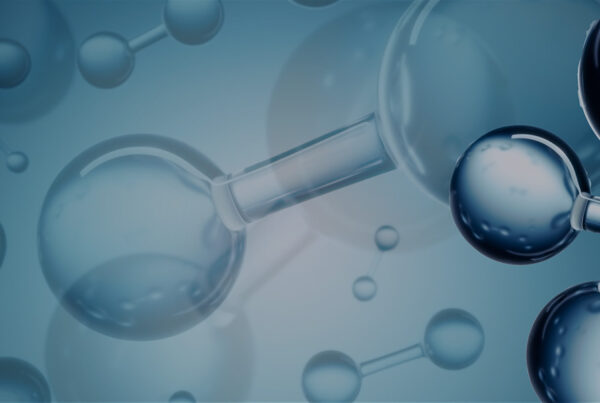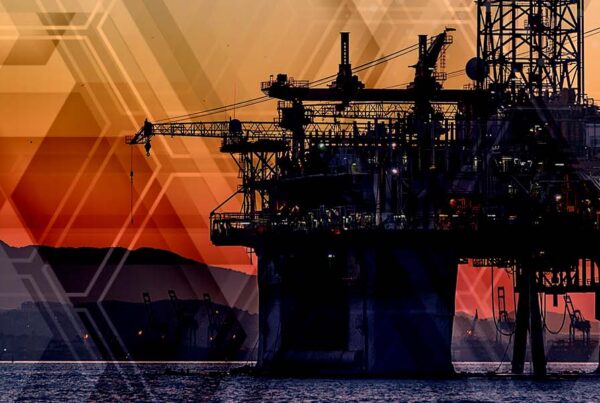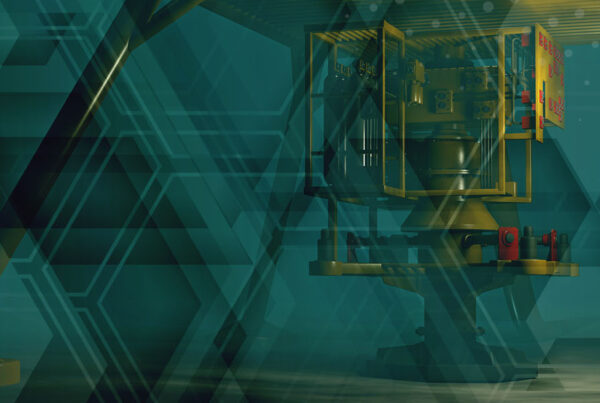FEBRUARY 2025
In January’s Westwood Insight, we outlined four key expectations for the European hydrogen market in 2025:
- The same number of FIDs (as 2024), but of larger scale
- Greater regulatory clarity
- More innovation to manage project risks
- More subsidies, with (importantly) more targeted subsidies
This month, Hydrogen Compass explores how these expectations are beginning to take shape. While the market faces challenges, such as financial instability for technology providers, early strides are also being made. From the first major FID in 2025 to the introduction of new policy frameworks and innovative financial solutions, key developments have started to transform European hydrogen in 2025.
The next edition of Hydrogen Compass will be published in March. In the meantime, if you have any comments or feedback, please do reach out to Jun Sasamura ([email protected]).
1. Smaller-scale FID in January, and momentum in larger capacity projects
GreenH, a Norwegian green infrastructure developer, reached a Final Investment Decision (FID) on its 20MW (13.2 MW(LHV)) Bodø hydrogen project in late January, making it the first major European[1] hydrogen project to hit this milestone in 2025. Expected to start commercial operations in 2026, the project will supply fuel for the Vestfjorden ferry route operated by Torghatten Nord.
While past progress does not guarantee future success, securing FID for smaller-scale projects remains crucial – especially in a market where momentum has visibly slowed. This was emphasised by Iberdrola’s executive chairman, Ignacio Galán, who, at the World Economic Forum in January, highlighted the insufficient support for hydrogen and its derivatives. Despite these challenges, significant progress has continued at larger scale capacities, with two major Spanish projects advancing in January.
Repsol is moving forward with its 200MW Hydric electrolytic hydrogen project, despite having frozen 350MW of projects in October last year due to disputes over the Spanish government’s proposed windfall tax exemption due to start in 2025. The original Hydric project was designed to start with a 30MW first phase, followed by a 100MW expansion at a decommissioned coal plant in Puertollano by 2026. However, it remains uncertain whether this timeline still holds and whether Repsol remains the sole offtaker, with hydrogen originally set to be delivered via pipeline to its Puertollano refinery, 10km away. Still, Repsol’s renewed commitment signals confidence in large-scale hydrogen development.
Similarly, Moeve expects to begin construction on the first 400MW phase of its 2GW electrolytic hydrogen project in Huelva by this summer, positioning it as one of Europe’s largest hydrogen projects under construction. FID is expected within the next few months, with production anticipated to begin in 2027. The announcement also coincides with Spanish Prime Minister Pedro Sanchez’s announcement of a €1.3 billion initiative to fund hydrogen hubs nationwide.
Despite broader concerns about industry slowdowns, these developments highlight that momentum continues – both at smaller and larger scales – driven by evolving policy frameworks and subsequent strategic investment decisions.
2. Shifts in policy to support hydrogen uptake
Calls to ease or remove the stringent requirements for Renewable Fuels of Non-Biological Origin (RFNBOs) have become increasingly prevalent, with figures like German Chancellor Olaf Scholz arguing in early January[2] that these policies inflate costs and reduce competitiveness, leading to the slow adoption of renewable hydrogen. While regulatory revisions remain unlikely in the near term, a shift towards greater political pragmatism may emerge as a key trend – especially in supporting other low-carbon production pathways and streamlining funding and project approval processes.
Later in January, Germany’s Christian Democratic Union (CDU) reaffirmed its commitment to both renewable and low-carbon hydrogen, should it win the federal election in February, as polls predict. The party voiced support for CCS-enabled hydrogen production to reduce emissions and has also expressed openness to receiving nuclear-powered hydrogen from France.
Meanwhile, the European Commission’s Competitive Compass initiative, announced in late January, aims to enhance European industrial competitiveness while ensuring progress toward the EU’s 2050 climate neutrality goals. Although hydrogen is not a central focus, measures such as streamlining project permitting and increasing EU investment could accelerate the growth of hydrogen, which has faced challenges in long development processes and access to funding.
3. Technology providers continue to struggle
Electrolyser manufacturers have continued to face significant financial instability, with many companies struggling to navigate a slowing market that has yet to meet expectations set for the industry. Elogen and Nel, for example, are grappling with severe cash flow issues due to delays and cancellations of hydrogen projects. Sales and orders have not met initial projections, contributing to their financial challenges.
In January, Elogen’s parent company, GTT, launched a strategic review, with the threat of potential closure looming despite receiving considerable state aid for a new electrolyser plant in France. Similarly, Nel announced a temporary suspension of production at its 1GW alkaline electrolyser plant in Herøya, Norway, due to slower-than-expected demand for renewable hydrogen.
In the UK, Johson Matthey, under pressure from its largest shareholder, Standard Investments, to limit hydrogen investments until a clearer path to profitability emerges, revealed a drastic 83% reduction in its hydrogen business budget, cutting investment from £30 million to £5 million starting in April this year.
Despite these setbacks, innovative solutions are emerging. In early January, Topsoe partnered with New Energy Risk to offer performance insurance for its solid-oxide electrolysers, improving financial stability and project bankability. Sunfire secured €200 million in financing, 80% guaranteed by the German government, allowing it to scale operations and fulfil orders without needing cash collateral. While these strategies will support the financial outlook of these companies, questions remain about the sustainability of these approaches – this will be something to watch in the coming months.
4. Focused support to drive market growth
In January, two announcements highlighted focused efforts to address key challenges in hydrogen market development: Spain’s €1.3 billion hydrogen hub initiative and Hintco’s draft hydrogen sales framework agreement. They aim to support grey hydrogen replacement and facilitate offtake agreements, critical areas to support market growth.
Spain introduced its hydrogen hub initiative to integrate production, distribution and demand for renewable hydrogen, targeting the replacement of fossil fuels and grey hydrogen in strategic regions. The initiative will fund local hydrogen ecosystems, particularly those that nearly secured EU subsidies but fell short, underscoring the government’s commitment to overcoming funding access challenges that developers in the market have faced.
The H2Global initiative, backed by countries including Germany, the Netherlands, Canada and Australia, utilises a competitive auction system where Hintco, an intermediary, buys hydrogen at the lowest price through Hydrogen Purchase Agreements (HPAs) and resells it to the highest bidders via Hydrogen Sales Agreements (HSAs). In January, Hintco released a draft Hydrogen Sales Framework Agreement outlining the structure of these contracts. The goal is to bridge the price gap between purchase and sales through indirect subsidies, with the pilot auction scheduled for early 2026.
By focusing on co-located grey hydrogen replacement and addressing offtake challenges, both initiatives are helping to advance the development of a more robust hydrogen economy.
Key European Project Watch
Key project announcements and developments in January
| Project | Update |
| Rjukan Hydogen Project | Norwegian Hydrogen has acquired Aker Horizons’ electrolytic hydrogen project in Rjukan, Norway. The company plans to install a 25MW electrolyser having signed a letter of intent with Nel for the delivery of a pressurised alkaline electrolysis plant. Aker Horizons has the option to re-enter as an investor in the project at a later stage. Westwood estimates the project to have an online date of 2026 with the project awarded NOK 135mn (€11.50mn) by the Norwegian government in 2023. |
| Naantali eMethanol | Liquid Wind and Turun Seudun Energiantuotanto (TSE) have signed a Memorandum of Understanding (MoU) for the development of an eFuel facility in Naantali, Finland. The facility is expected to produce 100,000 tonnes per year of methanol made from electrolytic hydrogen and approximately 160,000 tonnes of biogenic CO2 once operational. The FID is planned for 2026, and the facility is expected be operational in 2029. |
| Nokia eMethane | Freija is developing a clean fuel production facility in Nokia, Finland, aiming to produce up to 58,000 tonnes of e-methane annually per year using renewable hydrogen and biogenic CO2. The project, aligned with EU Renewable Fuels of Non-Biological Origin (RFNBO) standards, seeks to offset up to 200,000 tonnes of CO2 emissions annually, enabling the decarbonisation of the maritime and heavy transport industries. Freija has already signed MOUs for most of the first plant’s production and plans to reach FID by 2026, with production starting in 2029. Westwood has estimated an electrolyser capacity of around 85MW per phase of the project which Freija says could be up to three phases. Freija has initiated FEED studies for the first phase and submitted its Environmental Impact Assessment (EIA) programme report for the 150,000 square meter site. |
| Liquid Wind, FlashipTHREE | Liquid Wind has secured an environmental permit to establish a large-scale e-fuel production facility in Umeå, Sweden. The plant, developed in collaboration with Umeå Energi, will be connected to the Dåvaverket cogeneration plant. It is designed to capture 230,000 tonnes of carbon dioxide and produce up to 130,000 tonnes of e-methanol. The facility is expected to commence production in 2027. |
| VoltH2 - Delfzijil | Evonik and VoltH2 have signed an agreement for the supply of electrolytic hydrogen from a 50MW electrolyser that VoltH2 will build near Evonik’s hydrogen peroxide plant in Delfzijl, Netherlands. This partnership aims to replace fossil-based hydrogen in hydrogen peroxide production, a key component used in industries like paper bleaching and detergent manufacturing. The VoltH2 plant, expected to be operational by late 2027, will provide a significant portion of Evonik’s hydrogen needs, with the remainder initially sourced from conventional fossil-based hydrogen. Additionally, VoltH2 will establish a hydrogen filling station for tube trailers to serve other industrial customers in the region. |
Jun Sasamura, Manager – Hydrogen
[email protected]




